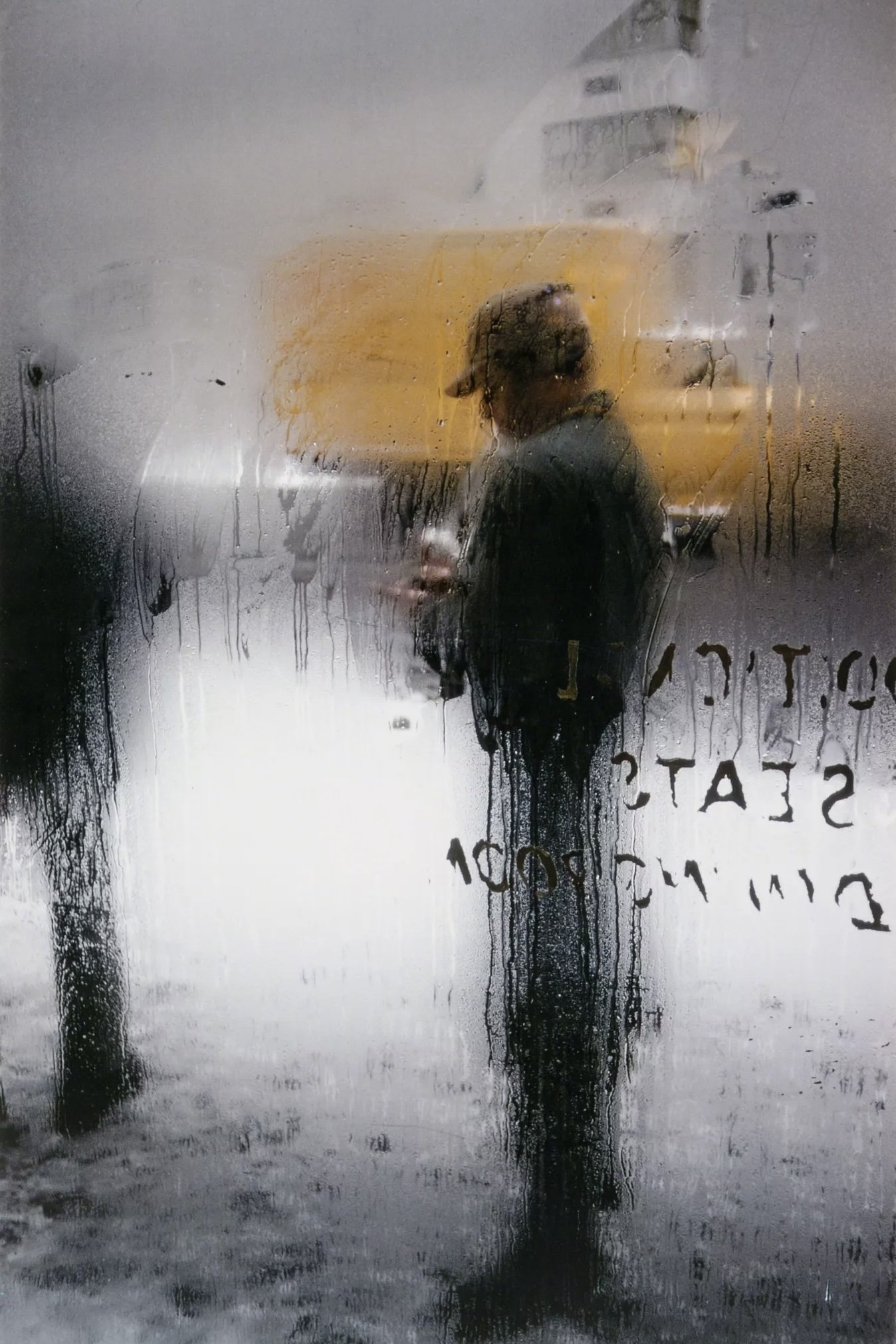Saul Leiter’s photographs, particularly those from the 1950s and 1960s speak to me in a way few artists ever have. His world feels dreamy, fragmented, and invites me to pause, observe, and feel.
Taxi, 1957
Leiter’s use of colour was the first thing that drew me in. His palette is quiet yet vibrant, filled with soft pastels and unexpected bursts of bold hues. It’s not just the colours themselves but the way he uses them—through foggy windows, reflections, and layered compositions. His work feels like visible poetry.
Red Umbrella, 1955
I love how he captures the ordinary and transforms it into something extraordinary. A rainy street corner, a foggy café window, or the fleeting silhouette of a passerby becomes timeless and mysterious in his hands. He uncovered beauty in life’s fleeting, unguarded moments.
Snow, 1960
What resonates deeply with me is the sense of anonymity in his work. Many of his subjects are faceless or partially obscured, framed through unexpected angles or cropped in ways that feel both spontaneous and deliberate. This creates a sense of detachment that is paradoxically intimate.
Phone call, 1957
Saul Leiter’s work feels like a conversation between light and shadow, colour and form, the seen and the unseen. Each photograph offers a new way of experiencing the world.
His work is a reminder that art doesn’t always have to be loud to make an impact. His images invite you to look closer, to appreciate subtlety, and to embrace imperfection.
Man in Straw Hat, 1955
For me, that’s what makes Leiter’s street photography so timeless and so profoundly moving. It’s not just about what’s in the frame it’s about how it makes you feel, the stories it sparks in your mind, and the way it transforms the everyday into something magical.




